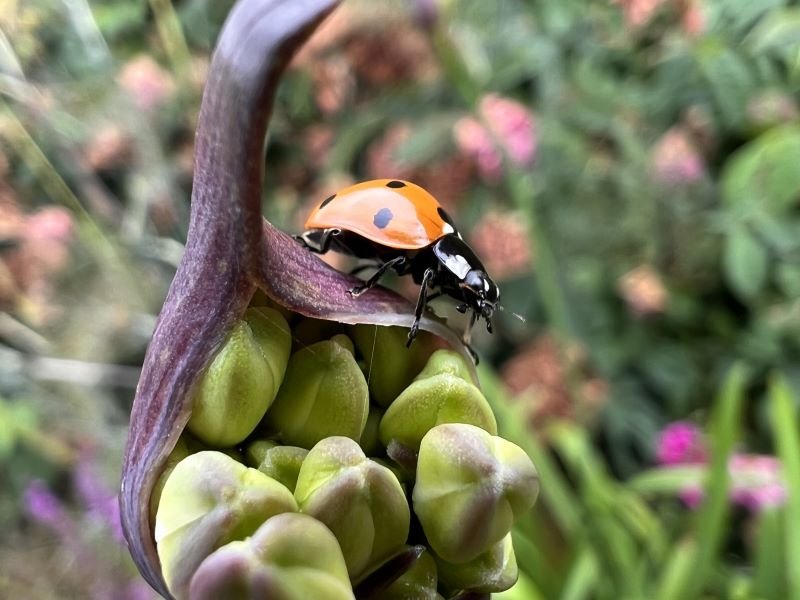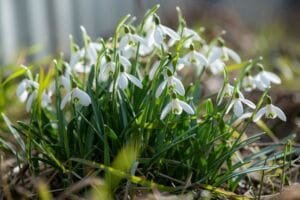A healthy garden ecosystem relies on a delicate balance of plants, insects, and other organisms. While the term “pests” often dominates gardening discussions, there is an array of beneficial insects for your garden that serve vital ecological roles. Understanding these helpful bugs and attracting them to your outdoor space can dramatically reduce dependence on pesticides and improve garden vitality.
Why Beneficial Insects Matter
Beneficial insects are the unsung heroes of the gardening world. These bugs prey on harmful pests, pollinate plants, or decompose organic matter. Supporting these varied functions through integrated pest management (IPM) is key to sustaining plant and insect health without relying solely on chemical solutions.
IPM involves thoughtful pest monitoring, prevention, and control using comprehensive methods like crop rotation, resistant plant varieties, biological controls, and targeted pesticide use only when necessary. Beneficial insects naturally regulate pest populations and enable the ecosystem to thrive. An IPM approach works with nature rather than against it.
Types of Beneficial Bugs
There are thousands of insects that offer ecological services to the landscape. Here is an overview of key categories and examples:
Predators
These ferocious beneficial insects will devour garden pests.
- Lady beetles (ladybugs): Both larvae and adults eat soft-bodies insects like aphids. A single ladybug can consume 50 aphids per day!
- Lacewings: Lacewing larvae have enormous appetites and may eat 200 pests like aphids, mealybugs, thrips, and mites before maturing.
- Syrphid (hover) flies: Adults pollinate plants; larvae prey on aphids and other soft pests. One larva can decimate up to 400 aphids!
- Parasitic mini wasps: These tiny wasps lay eggs inside host insects like tomato hornworms, caterpillars, and leafminers. The offspring devours and kills the host pest from the inside out.
- Ground beetles: These crawling predators feast on slugs, snails, cutworms, and other ground-dwelling prey.
- Spiders: All spiders are predatory and eat insects along with other small invertebrates that become ensnared in their webs.
Pollinators
Bees, butterflies, beetles, and other bugs transfer pollen between flowering plants, enabling fertilization and fruit production.
- Bees: Beyond producing honey, bee pollination leads to bountiful vegetable and fruit yields. Bee species include honey bees, mason bees, carpenter bees, mining bees, leafcutter bees, and more.
- Butterflies: These beautiful beneficials flutter from blossom to blossom, transporting pollen with their legs and wings. Native plants attract the most butterfly diversity.
- Beetles: While some are predatory, many colorful beetles like soldier beetles and scarabs also distribute ample pollen.
- Flies: It’s true – some flies are pollinators too! Flower flies and bee flies visit numerous plant species.
Decomposers
This waste removal team breaks down decaying plant debris, recycling nutrients back into the soil.
- Earthworms: Earthworm tunnelling aerates soil and their castings contain key nutrients. Charles Darwin called them “Earth’s intestines.”
- Pill bugs and sow bugs: Controlling decay of ground plant litter, these isopods enrich topsoil as they munch.
- Beetles and their larvae: Diverse dung beetles, scarab beetles, carrion beetles, and their offspring decompose animal debris.
- Flies and maggots: Yes, beneficial flies again! Scavenger species colonize and consume decomposing organic waste.
- Ants: Not typically thought of as helpful, some ants distribute and process nutrients from dead insects and fungi.
As you can see, beneficial insects occupy varied ecological roles. Now that we’ve covered major categories, we’ll explore how to bolster their presence in your outdoor space.
Attracting Beneficial Bugs to Your Garden
Inviting helpful insects is easier than you think! Follow these key tips:
- Diversify plantings. Flowering annuals, perennials, trees and scrubs offer nectar and pollen for many pollinators. Native, pest-resistant plants tend to attract the most varieties. Just be sure to provide season-long blooms.
- Supply other food sources. Allow some lawn weeds like clover or dandelions for early pollinator feeding. Provide overripe, non-chemicalized fruit for some beneficials. Leaving decaying wood or mowing less supports decomposers.
- Avoid pesticides. Broad-spectrum chemicals indiscriminately kill pests AND beneficial insects. Research non-toxic options first like insecticidal soaps or horticultural oils.
- Offer nesting spots. Ground-nesting bees appreciate undisturbed areas with bare soil. “Bee condos” provide holes for tunnel nesters while brush piles give insects places to hide. Add birdbaths, mud puddles, upturned pots filled with straw as other nest sites.
- Plant wisely. Beneficial bugs need shelter from weather extremes, pest attacks, and predators like birds. Ensure adequate foliage layers via companion planting and incorporate native plants suited for your region.
If existing insectary plantings or natural areas are scarce, creating designated beneficial insect zones specifically suited to local species is hugely impactful. This targeted approach enables helpful bug populations to establish more easily.
Nurturing Established Populations
Once beneficial insects move into your landscape, be sure to support their needs:
- Learn to identify key species in each functional group – predators, pollinators and decomposers. Observe hunting techniques or nesting behaviours. Celebrate learning something new about the ecosystem in your backyard!
- Keep a simple garden log noting when and location where beneficial insects are spotted. Track dates or patterns of first sightings. Use photos to document.
- Avoid overcleaning garden beds in fall. Fallen leaves, dried stalks and unmown grass provides overwintering sites for many insects.
- Research options should significant pest outbreaks occur. Refrain from impulsive chemical control which can inadvertently cause beneficial insect decline.
FAQs – Beneficial Insects For Your Garden
Q. What are the most common beneficial insects found in gardens?
Some of the most prevalent beneficial bugs in home gardens are lady beetles, lacewings, soldier beetles, assassin bugs, parasitic mini wasps, hover flies, bees, ants, and spiders.
Q. What are some signs that I have a healthy population of beneficial insects in my garden?
Indicators of robust beneficial communities include diversity (many species from all three eco-roles present), active hunting, nests or cocoons, low pest density, minimal plant damage, and abundant flowers and fruits.
Q. How can I deal with pests without harming beneficial insects?
Start by properly identifying the culprit pest. Hand removal, traps, barriers, repellents like kaolin clay, insecticidal soaps or oils often control small invasions without broad toxicity. Only apply pesticides that specifically target the verified pest as a last resort.
Final thoughts
Incorporating beneficial insect populations into your gardening practice takes patience and understanding, but the payoffs are immense. As these special bugs assume pest patrol, the need for synthetic controls and their risks diminish. Plant health and productivity soar thanks to naturally balanced nutrient cycling. Plus, observing newly discovered miniature predators and pollinators in action captivates wonder. Soon your appreciation will grow for beneficial insects as allies – an intricate part of the landscape’s overall health rather than just pest eaters or pollination work horses. Gradually transition sections or small test plots of your outdoor space to focus on benefiting bugs. Over time, the results from supporting beneficials and practicing integrated pest management will speak for themselves: a vibrant, more self-sufficient garden that bursts with life.






